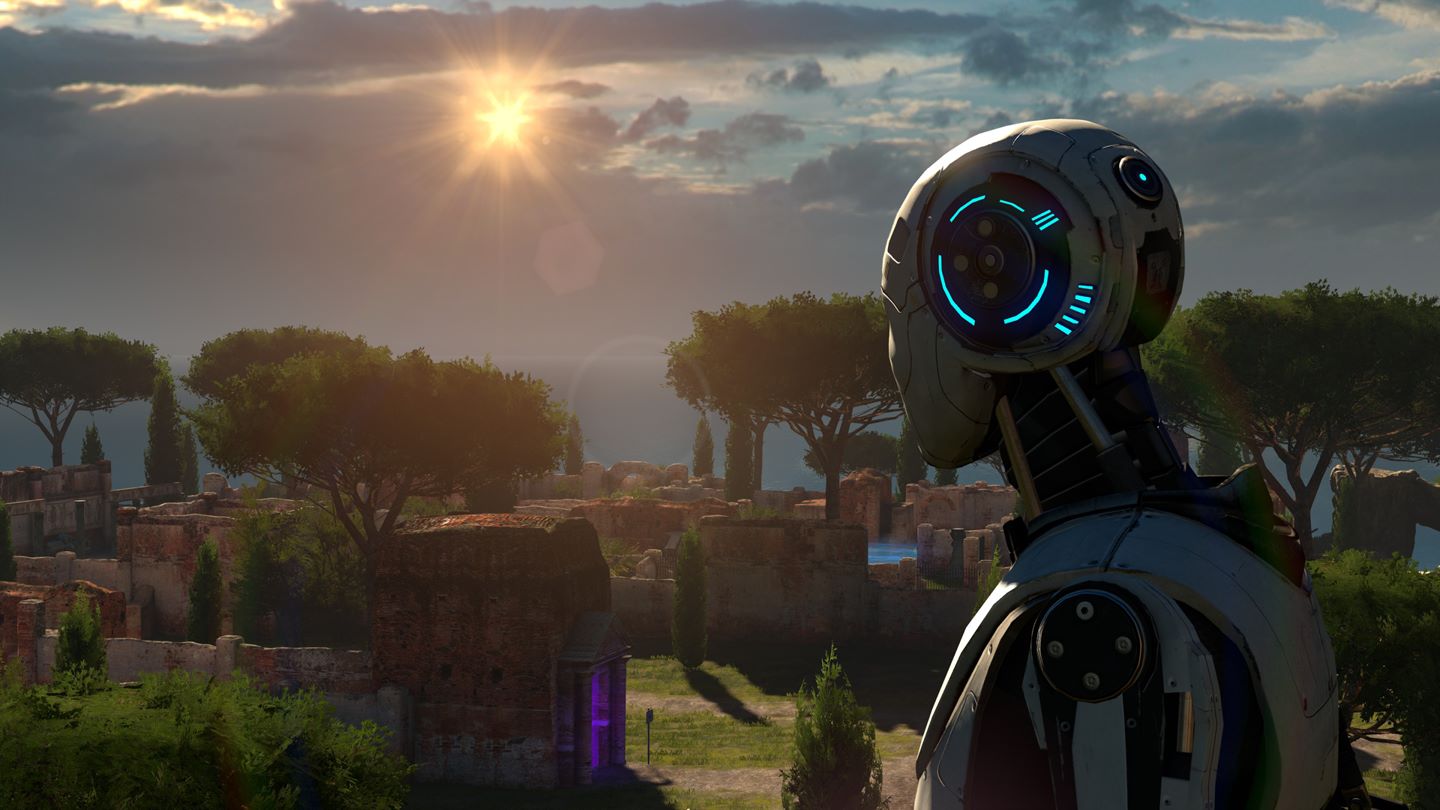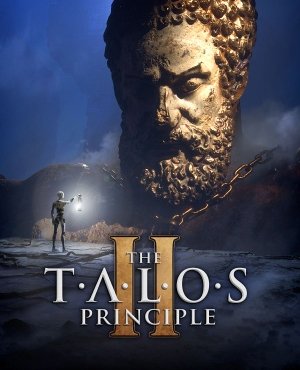
The philosophical questions here are not just high-minded fiddle-faddle. It also grounds the metaphysics by framing them with scraps of deeply human endeavors – the computer terminals contain conspiracy theorist blog posts, religious texts, meandering chat room logs, and heartfelt emails between family members. The Talos Principle not only presents a number of philosophical ideas and quandaries, but forces you to engage with them, pitting you against a feisty AI that pummels you with metaphysical questions, then demands that you defend your answers throughout the game using some of the oddest and most engaging dialogue trees I’ve played through in some time. It’s rare for a game to implement philosophical musings in anything but the most superficial way – a Nietzsche quote here, a black and white ethical dilemma there. The story is also uniquely optimistic for modern science fiction, which is so often anchored around fear of technology and progress. The very act of puzzle-solving plays a thematically resonant role in the story, as does the inescapable human urge to poke around beyond the set boundaries and explore the greater environment.
Hd the talos principle images free#
Suffice it to say that the game covers well-worn thematic ground – artificial intelligence, transhumanism, the nature of free will, the afterlife – but does so in an unusually immersive, thoughtful, and affecting way.

And there are audio logs left by a pivotal character whose tale forms the emotional arc of the entire story.ĭiscovering the nature of this world and its backstory provides much of the joy of the game, so I will keep things vague. Quick Response codes painted on the walls throughout the world contain messages from other (previous?) inhabitants. There’s a seemingly sentient “assistant” program you communicate with via computer terminal who pesters you with moral and ethical quandaries through dialogue trees. There’s the GLaDOS-esque narrator, ELOHIM, whose disembodied voice jumps in to encourage you to keep going… and discourage you from poking around too much outside of the puzzle rooms. The story evolves into something quite fascinating, told through a variety of methods, some conventional and some totally unique. And then there’s the occasional sight glimpsed out of the corner of your eye of a wall or tree “glitching” out of existence for a split-second. The world is made up of what looks like ancient Greek or Roman ruins, except for the computer terminals scattered around that contain scraps of emails, blog posts, chat logs, and an inquisitive AI named Milton. He informs you that solving these puzzles is the path to eternal life and his unending love. Take a few steps, and the booming voice of a god-like figure called ELOHIM fills the world. Sure enough, jump into third-person mode (which is available at any time but doesn’t add to or change the gameplay) and you’ll see that you are a robot, not unlike a less terrifying version of the Terminator’s endoskeleton. The very first thing you see in The Talos Principle is your character’s skeletal, metallic arm blocking out the blinding sun. While it lacks a single compelling mechanical hook like the portal gun, The Talos Principle carves out a distinct identity for itself with its own intriguing mystery alongside some of the most complex, challenging, and satisfying puzzles ever encountered in a game like this.

Instead, from the mysterious, omniscient voice-over to the discrete, sequential puzzle rooms, The Talos Principle is immediately reminiscent of Valve’s 2007 masterpiece.


It’s less surprising given the writing involvement of Jonas Kyratzes ( The Infinite Ocean, The Sea Will Claim Everything) and Tom Jubert ( The Swapper, FTL), though this game is quite unlike either designer’s previous work too. So it is with some surprise that the Croatian developer’s newest game has less in common with Duke Nukem and more in common with Portal. Typical moment-to-moment gameplay involves mowing down dozens of enemies streaming in while explosions, sprays of blood, and profanity fill the air. Sam, the protagonist, is a barrel-chested, square-jawed Schwarzenegger-type given to one-liners, sunglasses, and multi-barreled rocket launchers. Croteam has worked on a single franchise for nearly 20 years – the hyperactive retro first-person shooter Serious Sam series, which is characterized by huge environments, swarms of enemies, and really, really big guns.


 0 kommentar(er)
0 kommentar(er)
